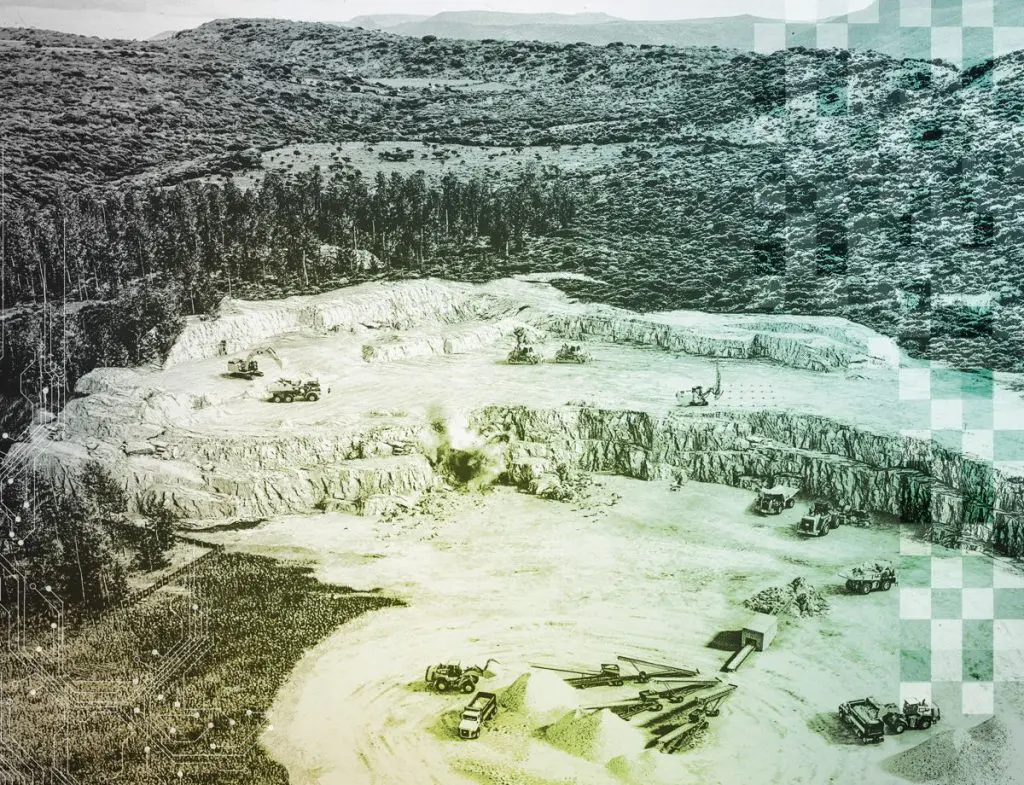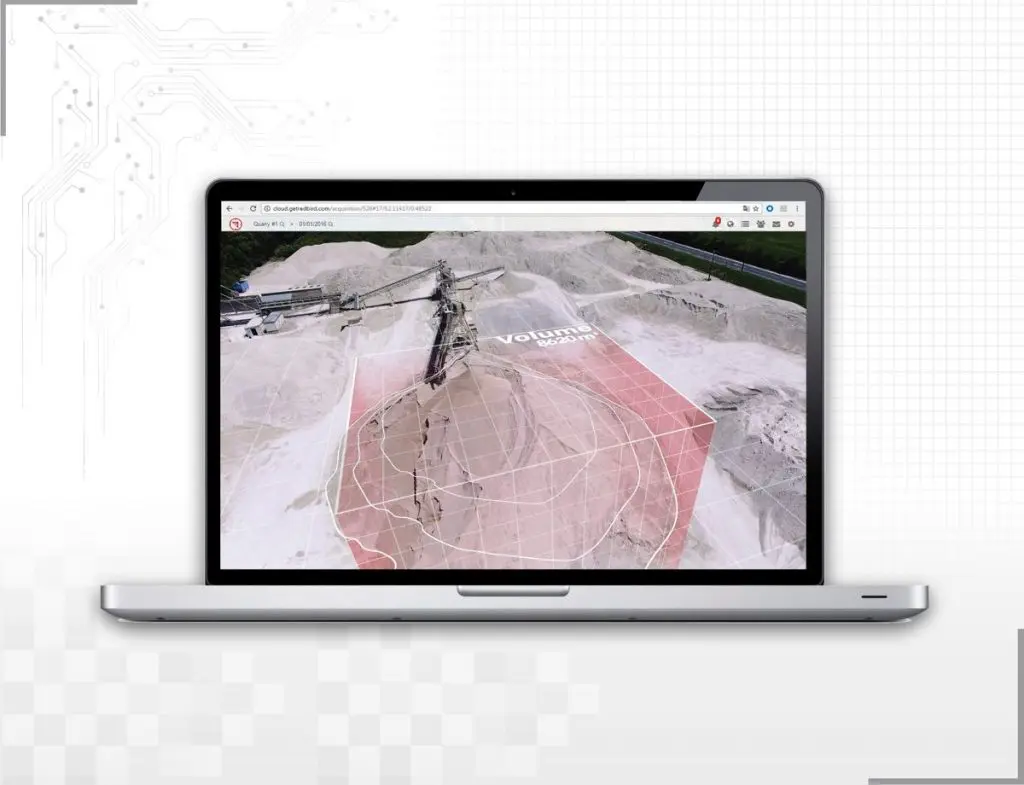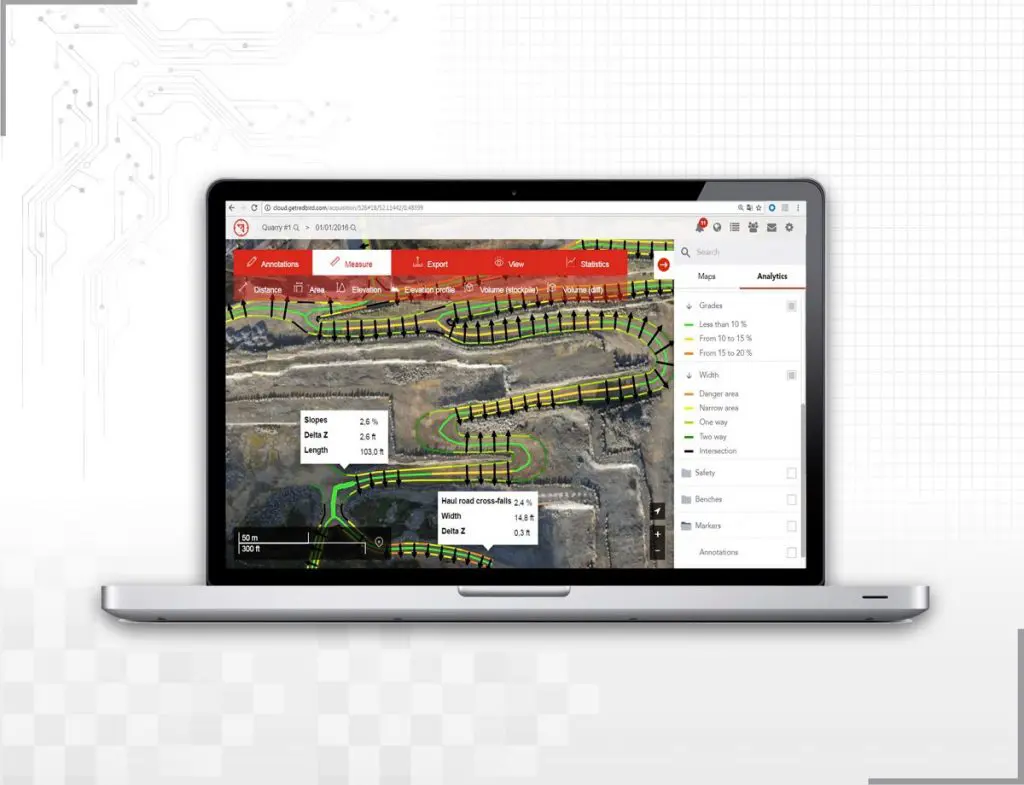Drone Technology in the Construction Industry
Construction is one of the world’s biggest industries, worth about $8.5 trillion a year. However, it is far from the most efficient. In 2016, McKinsey & Company reported that large construction projects of all types take longer than scheduled by 20 percent on average and frequently cost almost twice the budgeted amount.

Effectiveness isn’t getting any better, either. Construction productivity is surprisingly lower than it was even in the 1990s. Inefficiencies and sub-optimal production processes erode profit margins for projects big and small.
The construction industry accounts for 25 to 40 percent of America’s solid-waste stream. Purchasing and scheduling challenges lead to 15 percent of materials ordered by construction sites ultimately ending up in landfills. In comparison, disposable straws only account for one percent of landfill waste.
In 2018, new technology has begun disrupting standards of operations and making construction more efficient and sustainable. Industry leaders are implementing new technology such as aerial drones in construction to reduce costs while improving site efficiency, maximizing the profit potential while decreasing the impact and waste from each project.
Drone Technology in Construction
Drones, or unmanned aerial vehicles (UAV), are a rising trend among many industries. Today, the impact of drone technology on the digital transformation of the construction industry is undeniable. What started as a recreational toy or novelty camera has quickly become a competitive advantage for those willing to deploy it to their benefit.
Drones can do much more than produce high definition images. Scanning with drones can yield many kinds of useful data. These tools can use add-on equipment such as infrared, geo-locating and thermal sensors to assist in mapping construction sites and modeling construction projects. The footage captured can be converted into 3D models with real-world conditions incorporated, allowing for better iteration, higher feasibility and more accurate bids during the pre-construction phase.
Some of the significant advantages of incorporating UAV technology include:
- Reduced process and analysis times
- Less risk and consequently lower costs
- More precise digital data to allow for more accurate readings
- Easy accessibility via cloud-based integration
- More seamless jobsite progress monitoring
Specifically, drones have impacted the construction industry by:
- Enabling better construction site monitoring
- Calculating stockpile volume and material types for inventory
- Calculating length, width and elevation for roads and structures
- Annotating images and maps for easier communication
- Calculating overburden to plan for an efficient removal
Drones are taking an essential place in the construction process and are only increasing in popularity and functionality. Creative site managers are continually finding new applications for drone technology on construction sites.
Why Drones Are Being Incorporated so Quickly
Before the use of drone technology in construction, there was a disconnect between viewing a rendering of a job site versus seeing it in reality. Drone technology has revolutionized the way stakeholders view a site and visualize a completed project and allows for much more careful analysis of progress during construction.
1. Drones Make Your Company More Competitive
Drones have gained traction so quickly because of the competitiveness of the construction industry. Companies using UAV technology have a competitive advantage over other companies that are less innovative and sticking to traditional ways of surveying and analyzing job sites. Incorporating drone technology in your projects can be an enticing sales tool that may make the difference between a lead and a customer.
2. Drones Provide Additional Data
They also can add value to the customer during handover. Providing the client with visual data on the as-built condition of the building allows them to better manage and maintain the property after you’ve finished your work. Having this kind of information on file also reduces the chance of litigation and can be used as a defensive tool.
3. Drones Help You Monitor Progress
UAVs help you and the project owner visualize the completed job and see how the work is going every step of the way. Construction can be a time-consuming endeavor, and it’s not always easy to communicate to a client where exactly your time and their money go. Drones negate that uncertainty by allowing careful observation throughout the entire process.
4. Drones Are Cost-Saving
Drones are also a huge cost-saver across many different expense types. As an owner of a construction business, you’re able to monitor a job site live and take note of suspicious activity such as theft or wasted time. You’re also able to invoice more accurately by performing more quality inspections of work completed.
5. Drones Protect Your Crew
Your team can use the surveillance to check locations for assets and materials, rather than moving about the construction site, unsure if equipment and resources are where they are supposed to be. You can also use the drone to check dangerous areas remotely without risking harming the crew.
6. Drones Condense Data
While the drones themselves have been increasing in quality, so has the software that drives them. Advanced fleet management technologies reduce the work it takes to operate a single drone by enabling several fleets to work together throughout a job site and return all relevant information gathered back to the construction team. Software improvements allow for businesses to scale their company’s operations more quickly while being able to manage more drones at once and make use of them in more locations.
Overall, UAVs minimize the amount of needless work and increase efficiency due to more careful monitoring of the construction process. Mistakes will be caught much earlier and can be corrected before they escalate into a more troublesome problem. With all these advantages, it’s obvious why UAV technology has been implemented so quickly.
Some Drawbacks of Current Drone Technology
While drones provide various advantages for your construction company, they aren’t without some drawbacks to consider.
In the United States, the Federal Aviation Administration (FAA) has implemented a mandatory registration of all UAVs before flight to receive a certification that allows operation of unmanned aerial vehicles in construction legally. Failure to comply can result in penalties of from $27,500 to $250,000 and imprisonment. Specific restrictions may also be in place depending on the state you reside.
Other countries have similar policies in place, and new ones are being developed. If you consider implementing land surveying technology at your construction site, be sure to investigate what restrictions you have in your area.
Although drones are unmanned aircraft, they still require a human to operate, and reckless or amateur control of these aerial vehicles in construction can cause collisions resulting in personal injury and property damage that leaves you liable. An often-overlooked additional cost of UAVs is better insurance to help cover these risks and minimize loss caused by accidents. Ensuring drones are being piloted safety is important to avoid bringing harm to your crew and cost you extra money.
Where Drone Technology Is Going in the Construction Industry
Regulation
As drones become more popular, the question of how to regulate and manage their use will be a topic of debate.
In October of 2017, the U.S. Department of Transportation and the FAA introduced a plan to better regulate and utilize this new technology. The program intends to get the federal government, local authorities, tribal governments and private companies all working together on drone rules. This collaboration should make it easier for companies to test drones, go beyond the view of operators and fly over people’s heads.
Thermal Imaging
Thermal imaging is a priority in drone development. This advance allows the drone’s camera to detect infrared radiation in the electromagnetic spectrum, allowing precise mapping of numerous structures, landscapes and equipment.
Thermal imaging can help examine pipelines, solar panels, power grids and roofs for leaks, overheating, failure and proper insulation. Thermal UAVs also can help in dire situations if you have a worker trapped in heavy smoke or fog who needs assistance. These types of drones can spot living beings through almost any non-physical visibility barrier.
More automation is sure to come as well. Artificial intelligence is growing smarter and being implemented on more devices. But what does AI mean for drones? Drone mapping is going to become more seamless, allowing your drone to spot trends in the behavior to tell it to do, and eventually be able to utilize its abilities without manually scheduling flights.
Streaming
Recording and streaming drone footage to the internet will also become more common and will allow for more transparency within the operations going on throughout any job, which will increase the customer’s trust and prevent roadblocks you may have experienced by correcting your strategy in the future.
We will likely see even more innovative drone applications in the construction industry in the future.
What to Consider When Purchasing a Drone for Your Construction Site
When comparing construction drone technology companies and deciding which model to invest in, you should consider a few different elements:
1. Camera Quality
The higher the resolution of the camera used by a drone, the better the quality of the image you are going to get. High definition images are necessary for some features and software to work correctly, so to get the best utility out of a UAV, you’ll need a good camera.
2. Portability
How easy it is to take your drone from place to place varies in importance depending on its application. If the drone is going to be in one location for extended amounts of time, then portability may not be the most significant factor in your purchasing decision. However, if you think you’ll be continuously cycling your drones through different construction sites, you’ll want to be sure that the drone isn’t too heavy, and you might even want to be able to reduce its size by folding it into a compact form.
3. Durability
Can the drone stay pristine in typical construction site environments that tend to have a lot of dirt and dust being tossed about? If your drone can’t stand up to the elements and inevitable wear and tear, it is not worth the investment no matter how advanced the technology is inside.
4. Stability
Stability deals with wind speed resistance and how well your UAV can stay centered while being operated in rough conditions with a lot of air movement or rain. Consider what kind of hazards you face on your typical job sites and make a drone selection based on what appears to be best equipped to deal with those hazards and still produce a high-quality image no matter what the weather entails.
5. Ease of Use
Find out whether the drone comes ready-to-fly out of the box. If you must buy a modular camera, how easy will it be to install? You’ll also want to know if the drone includes any chargers or what other add-ons you might need. These are all questions that you must ask yourself regarding the ease of using your drone. There are certainly some drones that make the installation and operation easier than others.
Keeping these five aspects in mind when shopping for reputable drone companies and devices will help you make a favorable decision on the best drones for construction sites.
The Value of a Partner in Heavy Equipment
Partnering with someone with niche experience in heavy equipment solutions can help you make smart decisions about the kinds of technology that will be most transformative to your business. Searching for a company that caters specifically to the demands of the building and construction industry can aid your work on multiple fronts while saving you time managing your technological assets.
At Thompson Tractor, we can offer you technology systems that assist with building information modeling, site prep, layout, leveling, grading and more. Purchasing both equipment and services from the same reputable dealer saves time and money on top of great customer service. We can provide a variety of heavy equipment solutions and optimize your business for success.
Need Heavy Equipment?
Get the quality equipment you need when you need it. View our equipment online or contact us for fast local service.
Contact Us
To stay profitable in the coming years, your business will need to adapt to stay ahead of the curve. Learn more about how Thompson Tractor can help you, or contact us for more information.



